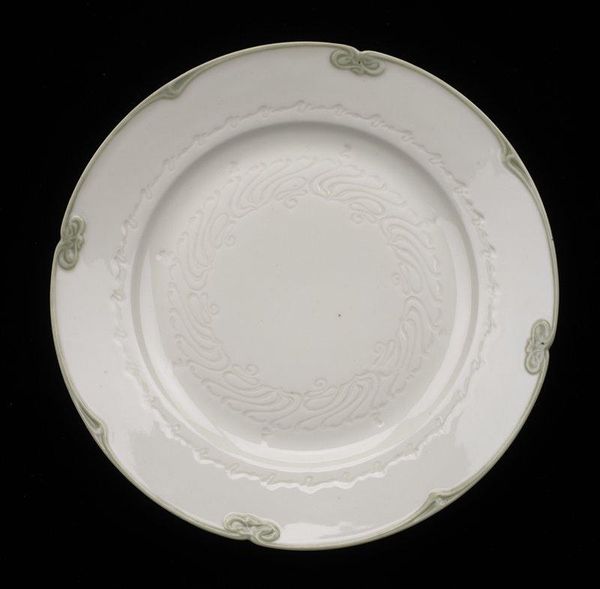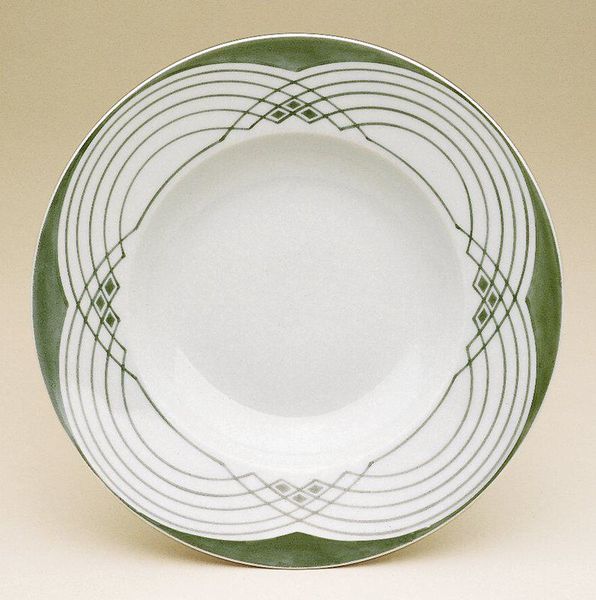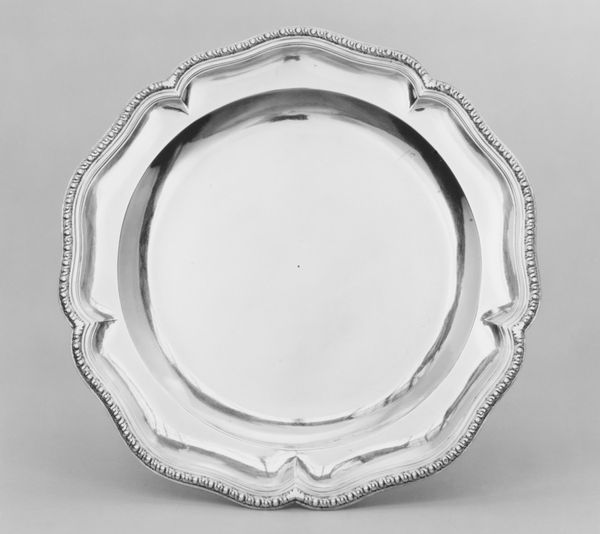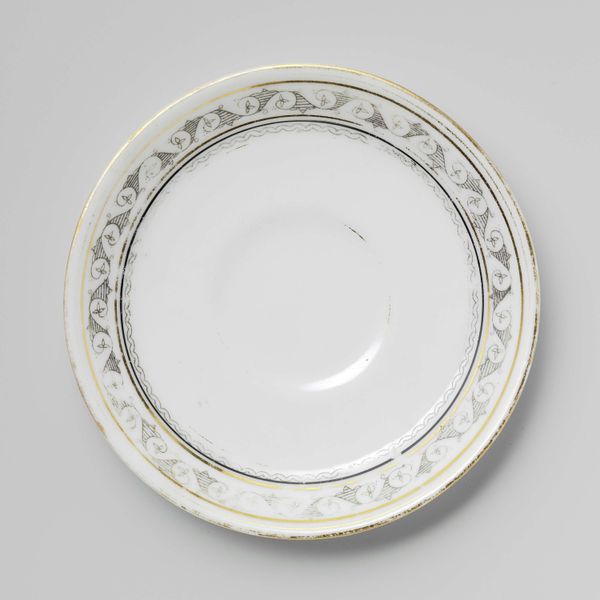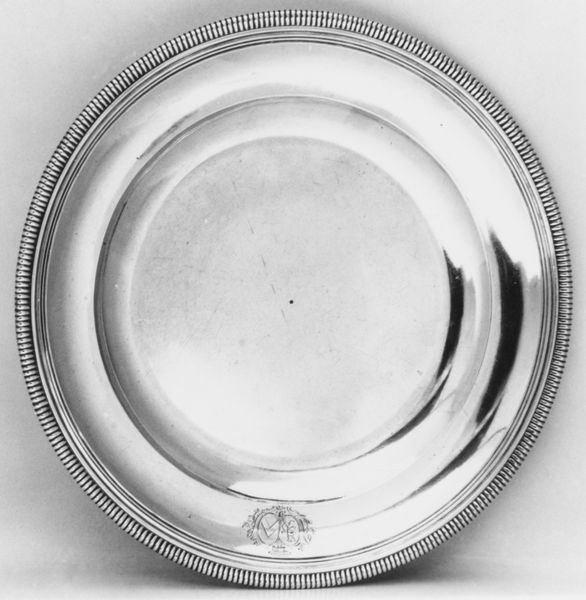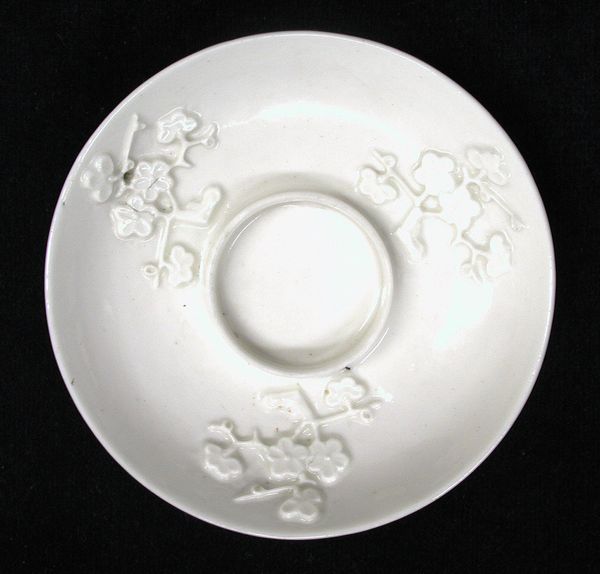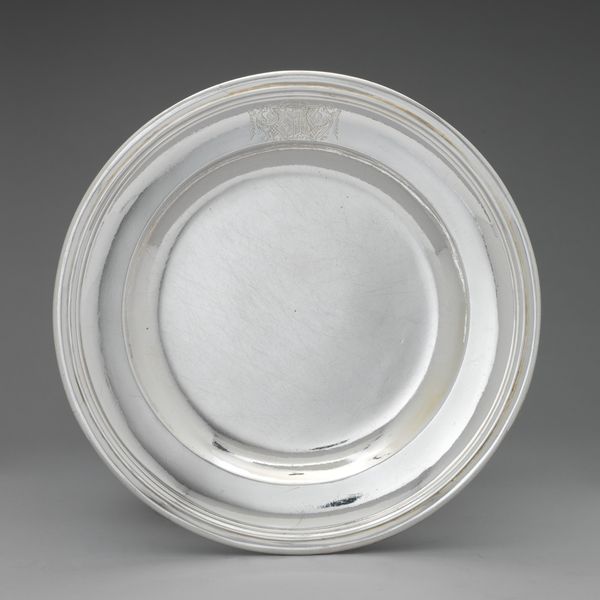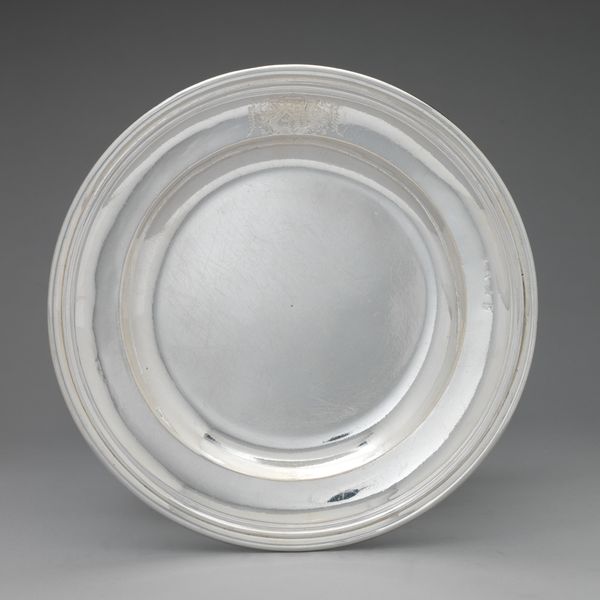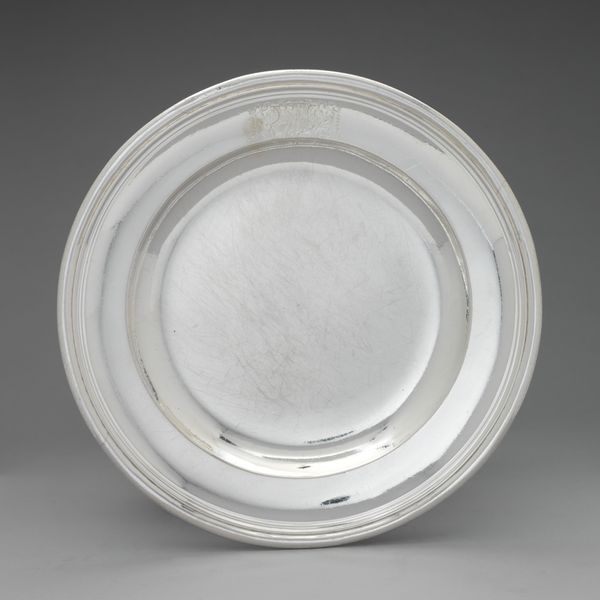
ceramic, porcelain
#
art-nouveau
#
ceramic
#
porcelain
#
geometric
#
ceramic
#
decorative-art
Dimensions: 10 3/8 x 10 3/8 in. (26.35 x 26.35 cm)
Copyright: No Known Copyright
Editor: This is a "Dinner Plate" by Henry van de Velde, created in 1904. It’s a ceramic piece, specifically porcelain, currently housed in the Minneapolis Institute of Art. The simple geometric decoration and stark contrast feel very modern to me. What can you tell me about it? Curator: Focusing on materials, porcelain represents industrial ambition merging with artistry in the early 20th century. Mass production allowed for accessibility, but designers like van de Velde still labored over aesthetic detail. Look at the subtle lines, the implied motion; does that suggest a challenge to conventional high/low art distinctions to you? Editor: Absolutely, it challenges the idea of the precious object. But wouldn’t a handmade ceramic piece have had a different level of prestige then? Curator: Precisely. This plate’s value exists not only in the materials but also in the process of its creation – a marriage of industrial efficiency and artistic design, and of course the social context around consumerism, allowing wider audiences to have access to quality aesthetics. What statement does this object, and its distribution, make about daily life for the burgeoning middle class? Editor: I see what you mean! It’s no longer about the individual craftsmanship, but how design can impact a larger community. I hadn't thought about porcelain within that social framework before. Curator: Considering labor, accessibility, and shifts in material value is critical for understanding Art Nouveau objects such as this plate. It really forces us to challenge those established norms. Editor: Definitely. I’ll never look at decorative art the same way! Thanks for widening my perspective on how everyday items play into wider societal stories.
Comments
minneapolisinstituteofart almost 2 years ago
⋮
Henry van de Velde was one of the leading designers of the Art Nouveau movement. It is noteworthy that he designed this plate, part of a larger dinner service, for the German Meissen firm, an instance of how major porcelain firms looked to international style makers to help them develop modern tableware lines. For the service, van de Velde employed the more linear aspect of Art Nouveau, as opposed to the naturalistic one. Purely dynamic, the design has geometric elements that were characteristic of German modernism as developed by the Wiener Werkstätte. The decoration is reinforced by the molded curves of the plate.
Join the conversation
Join millions of artists and users on Artera today and experience the ultimate creative platform.


